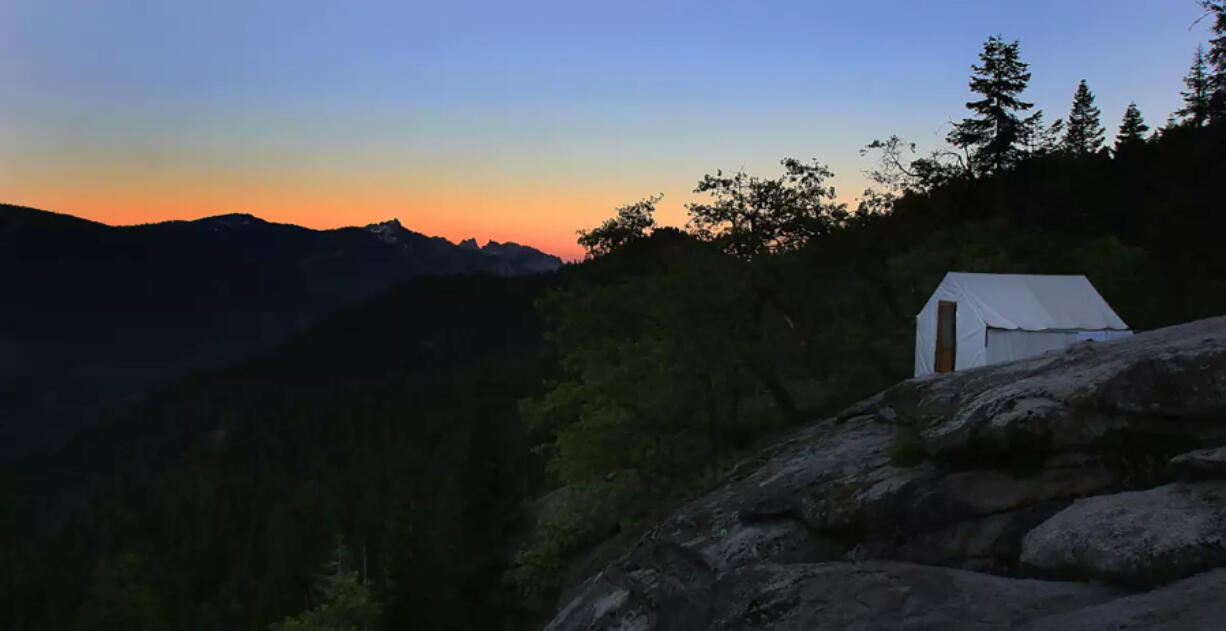After five years of pandemic- and snowpack-related closures, Yosemite National Park has reopened “glamping” campsites where visitors will have access to showers, gourmet meals and a view of the park’s wild backcountry.
Camping hopefuls can now enter a lottery to experience three of the five available campsites at the High Sierra Camps from June to September.
The two other sites, Vogelsang and Merced Lake — respectively the highest-elevation campsite and the oldest and most remote campsite, established in 1916 — will remain closed throughout the 2024 season; neither park officials nor Aramark, the park’s concessioner, could be reached to explain why.
According to the camps’ website, more than 13,000 visitors stay at the High Sierra Camps each year and another 1,000 backpackers passing through each year stop for food at the facilities.
“Glamping,” a more comfortable or glamorous version of camping, has grown in popularity in the past couple of decades. Visitors have the option of paying $1,403 for a guided tour of the park with a weeklong stay, or paying $172 to $185 per night to reserve a bed.
There’s been controversy among certain environmentalists who take a hard line against any type of development in the pristine wilderness, said Jane Simpson, chair of the leadership training program at the Angeles Chapter of the Sierra Club. But she said she is glad to hear that the campsites are reopening to the public this year.
“The experience is phenomenal,” Simpson said, recalling her own High Sierra Camp visit in 2015. “The people are very hyper aware of their impact.”
As an avid hiker and backpacker herself, Simpson is used to having to carry all of her own supplies when visiting Yosemite National Park. But the amenities of the High Sierra Camps allow visitors to leave behind tents and cooking necessities, as they have running water and three meals a day prepared by professional chefs.
On their website, Aramark and the national park service express their commitment to protecting the environment. “We take our role as stewards very seriously and actively work to protect the resources for generations to come,” says the website for the High Sierra Camps.
Jeff Jenkins, assistant professor of parks and protected areas at the University of California Merced’s Sierra Nevada Research Institute, said the National Park Service has to strike a balance between protecting national parks and making them accessible.
“I remember we saw a woman hiking the route of these High Sierra Camps that was pushing 90,” Jenkins recalled from the time his family stayed at the High Sierra Camps together.
First-time, inexperienced campers, the elderly, and families might prefer to stay at the High Sierra Camps because of the amenities.
By having designated areas where semi-permanent shelters are set up, Jenkins said, the “sacrifice zones” allow for a much larger swath of wilderness to remain untouched. “Impact has been constrained to mostly the trail corridor and these areas of the wilderness,” he said.
David White, the director of global sustainability and innovation at Arizona State University, describes it as the “fundamental paradox” of the national parks as they balance access and protection.



